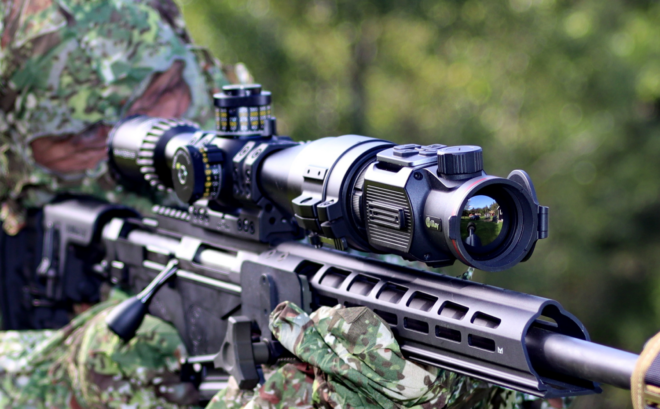This is a review of the InfiRay Outdoor Mate MAH50 Thermal Front Attachment. There are many reasons to consider thermal “clip-ons” for your ordinary day optic, and the MATE MAH50 is one of the best on the market in terms of image quality.
InfiRay Outdoor @ TFB:
- TFB Review: Infiray Outdoor Tube/Bolt TL35 SE Thermal Riflescope
- TFB Review: Infiray Outdoor Zoom ZH50 V2 Dual FOV Thermal Monocular
- POTD: Schmidt & Bender 6-36×56 with InfiRay Outdoor Mate MAH50
- TFB Review: Infiray FAST FAL19 – Red Dot Thermal Fusion Sight
Let’s take a closer look at what’s going on with that Ruger Precision Rifle in the back, and get the review going.
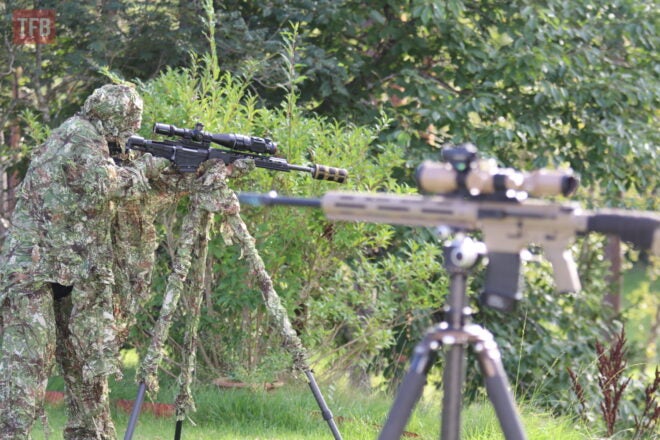
Thermal Front Attachment – An explanation
Judging by questions and things I hear, there seems to be some misunderstanding of what they do and how they work, so let’s go through some of the basics. A thermal front attachment refers to a device or accessory designed to be attached to an existing optical system, to enhance it with thermal imaging capabilities. Note that it’s very important to keep the attachment in line with your optics, to avoid POI shifts if you’re using it for shooting. Thermal imaging is a technology that captures the infrared radiation emitted by objects to create images based on temperature differences – the technology works well day as night.
In short, if you attach a thermal to your day optic, you’ve now transformed it into a thermal. Typically you will use the zero and reticle of your day optic, but there are some exceptions depending on the brand. All of a sudden you now have the ability to detect heat signatures in low-light or total darkness, and your setup (typically on a rifle) can be used for a lot more applications like surveillance, searching, wildlife observation and hunting.
It is also possible to attach a device like described here to an ocular and use it as a thermal monocular for search & rescue etc. See below for Infiray Outdoor’s example. I did not get this option, so I have not been able to review it.

Note that your day optic is looking into a small TV screen at the back, opposite the thermal lens and its electronics. It means that if that screen is crap (think low resolution) your day optic is certainly not going to improve things, and if you zoom in you will see a more and more pixelated image until it’s not useable anymore. This can be a bit difficult for the brain to compute, especially in darkness. The MATEs all use an OLED screen with 1024×768 pixels.
Overview
The housing is made out of magnesium, which makes it strong and light. It has IP67 protections. There’s a removable (magnetic) keypad and remote on top of the unit, with buttons that have a good sense and feel. There’s a round focus knob on top, so you can adjust the image to the target. This keypad can be mounted close to your trigger finger with double-sided tape, kept in your pocket or just ride on the unit.
I don’t have an image of it, but the MATE comes in a really nice carrying and storage box and it’s evident that Infiray spent some time and money on it.
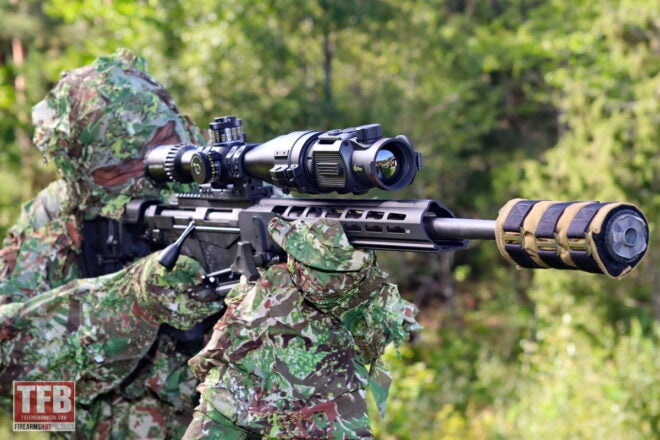
MATE supports practical functions, including removable buttons, LRF, and monocular extension. It is the ideal mate for users who want a compact size and great value.
Below: The adapter for the riflescope is mounted (left). The thermal lens is by the red ring. The basic weight is 530 grams.
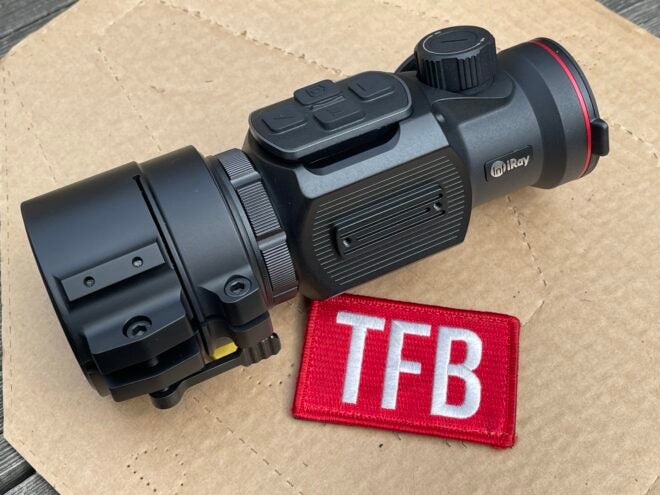
THERMAL specification
The Infiray Outdoor MAH50 uses a high-performance 640×512, 12μm thermal detector. 50Hz refresh rate and 50 mm germanium lens. The NETD is specified at less than 25mK. As I’ve mentioned in previous reviews about thermals, you have to be careful and benchmark units side-by-side as things like the NETD value (thermal sensitivity) sometimes seems to be a value that you just set for marketing purposes, not one that you measure in an independent lab.
However, with the MAH50 here the sensitivity really shines, and the image quality is one of the best – if not the best – on the market. In good conditions, the thermal image is really crisp and detailed. There will be sample images further down the review.
The different settings will activate various algorithms, to improve image quality based on different environments. As with all these digital devices, don’t be surprised if the best image quality has a different name than the one you’re actually looking at. If you can see clearly, smile and be happy.
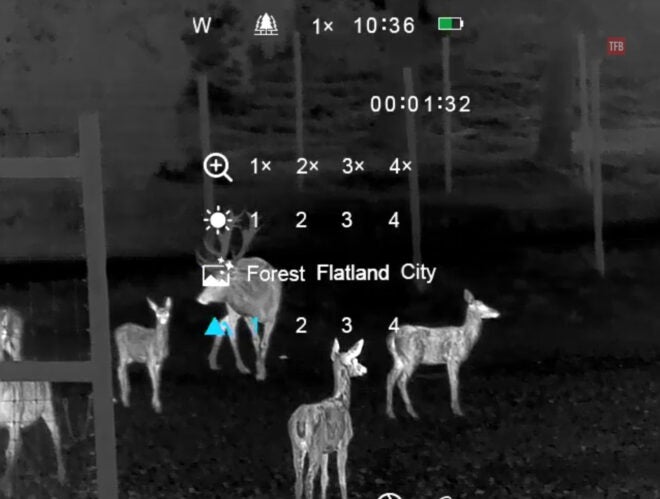
There are other (budget) versions of this device, called the MAL25 and the MAL38 but I have not had a look in any of those.
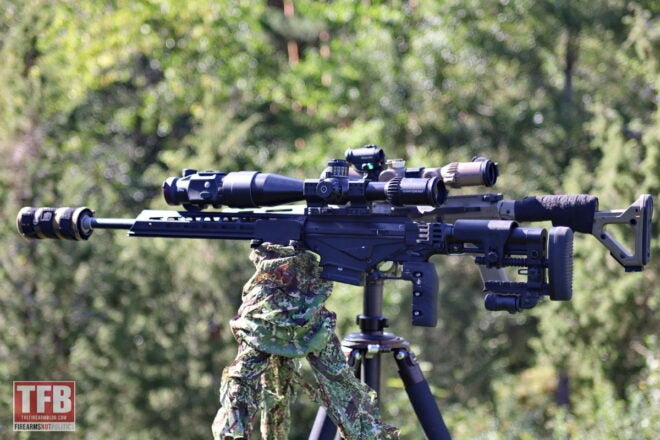
The brand new Schmidt & Bender 6-36×56 PM II scope with the InfiRay Mate MAH50 Thermal Front Attachment. No, a 6x minimum riflescope is not at all ideal for any kind of thermal clip-on, while you might actually still use it. A riflescope in the region of 2-6x is better suited, and many hunters use 3-12x or 2-12x or similar.
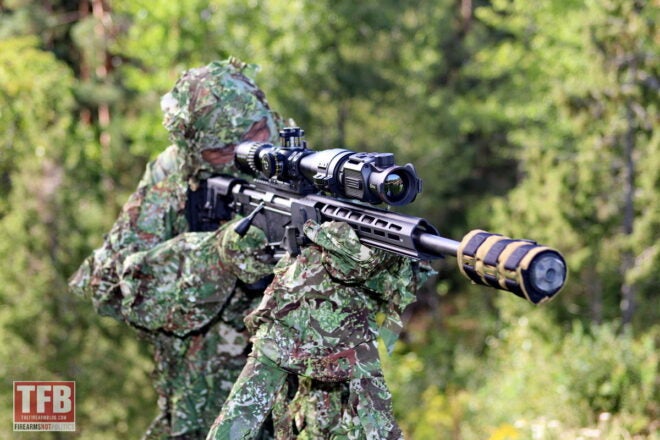
Even if the subject is thermals, this is The Firearm Blog after all, so you will get your share of firearms in all kinds of angles.
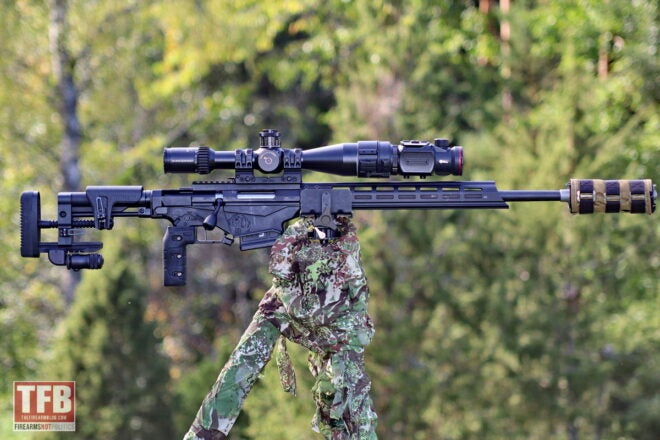
Thanks to my Ukranian friend, who helped me by becoming a model and demonstrating the Concamo / Ghosthood and the setup.
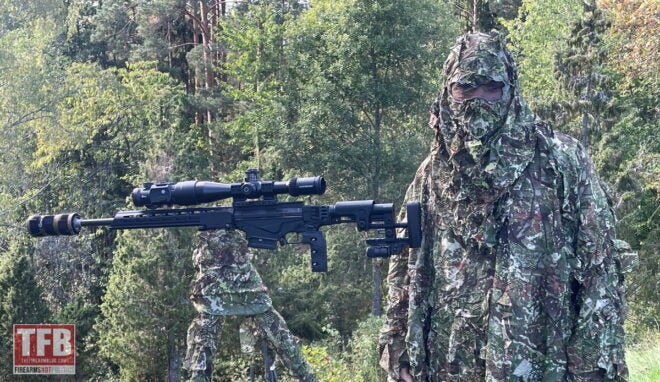
There’s an optional Laser Range Finder to this system, but it is not part of the review as I didn’t have it. You can find a direct link here.
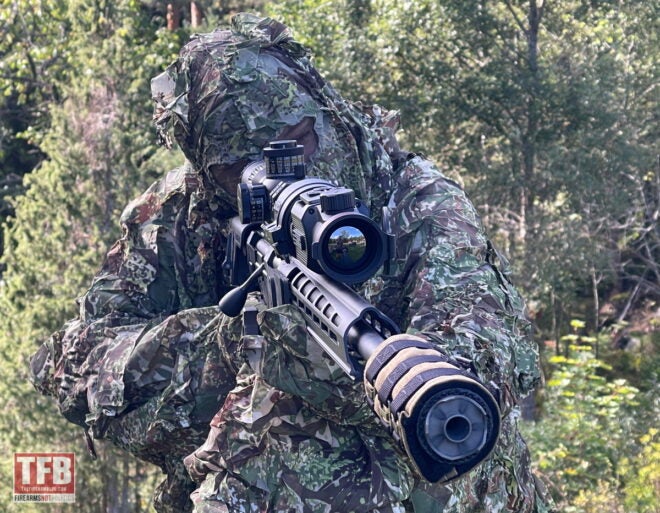
The suppressor cover is from Cole-TAC Europe, and it’s very efficient.
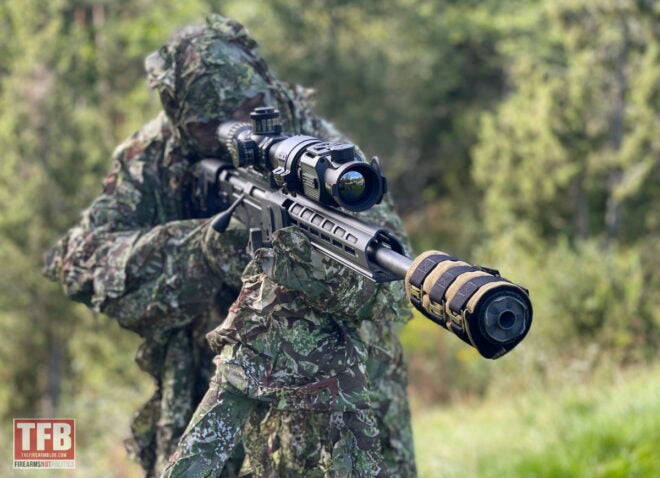
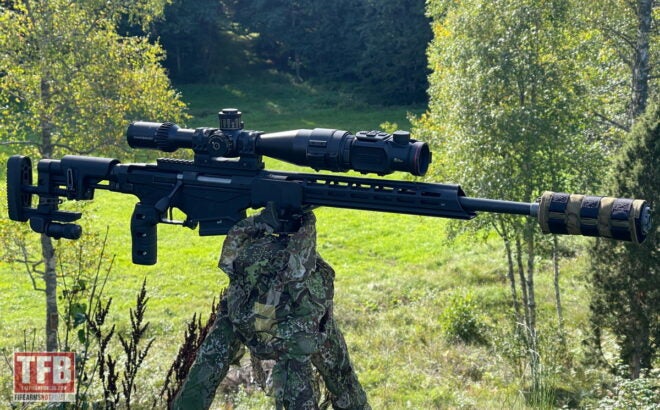
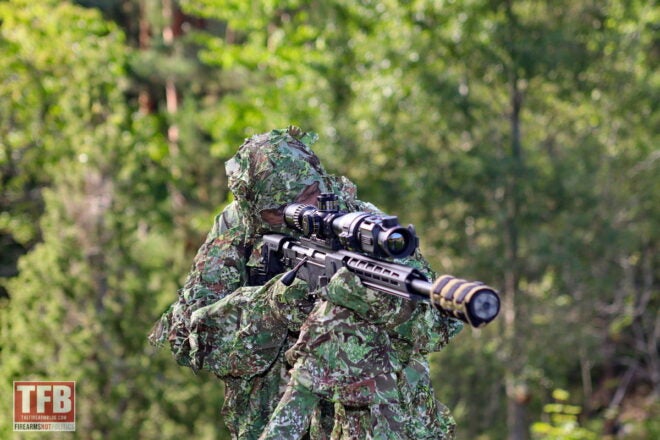
When mounting the adapter to your riflescope, beware not to damage your day optic. Perhaps put some protective tape on your day optic, before you snap everything on and get scratches.
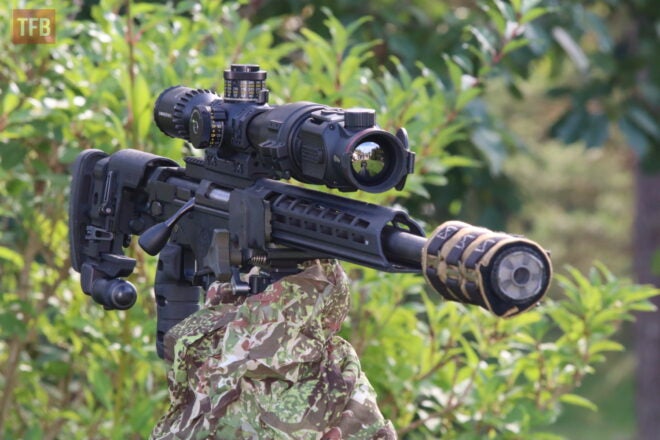
Here’s the MATE MAH-50 mounted on the Schmidt & Bender 3-20×50 PM II Ultra Short, a riflescope that would work quite allright unless you start cranking up the magnification.
This is what it can look like through the reticle of a day optic and the MATE50. Note that the reticle is on minimum zoom, so it washes out in the image (you can still see a hint of it). The MAH50 does NOT have a reticle of its own, you use the zero of your normal day optic, and mount the clip-on as straight as possible.
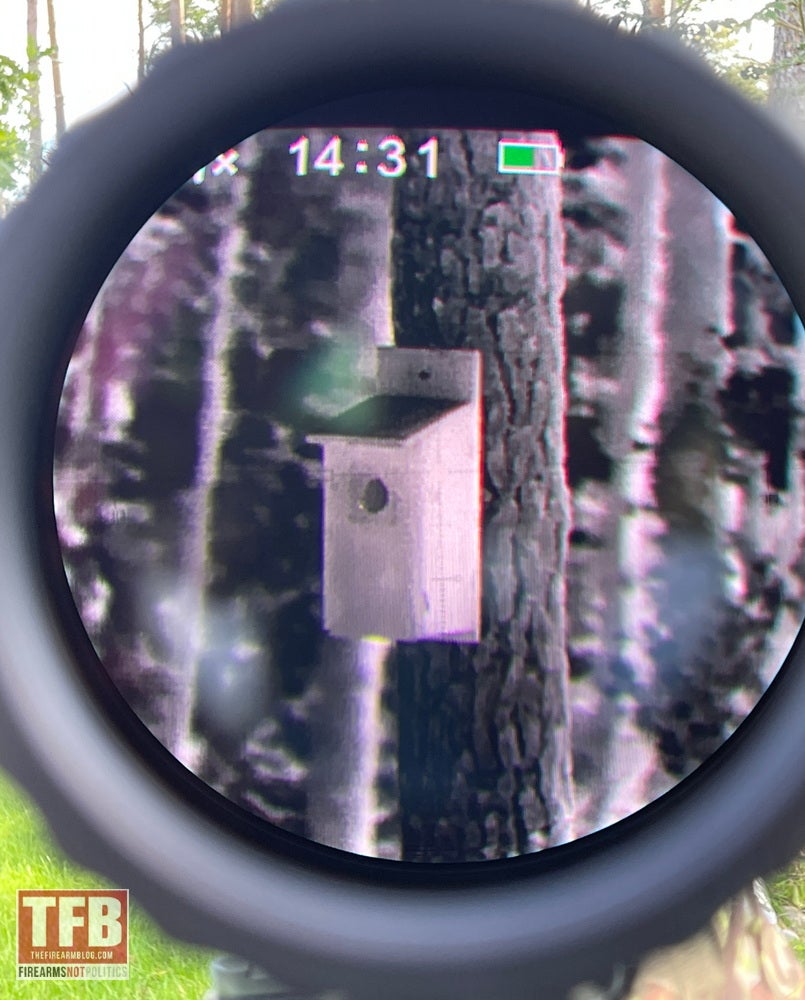
Image quality
Thermal Image quality is one of the main reasons to choose a thermal over another, although I think too many go for a lower price as a priority. Here you’ll find a bunch of images, taken over the summer and autumn of 2023. In 2024 I think we will see more and more 640x sensors becoming the norm, and we will also continue the ventures into HD thermals (1024x and more).
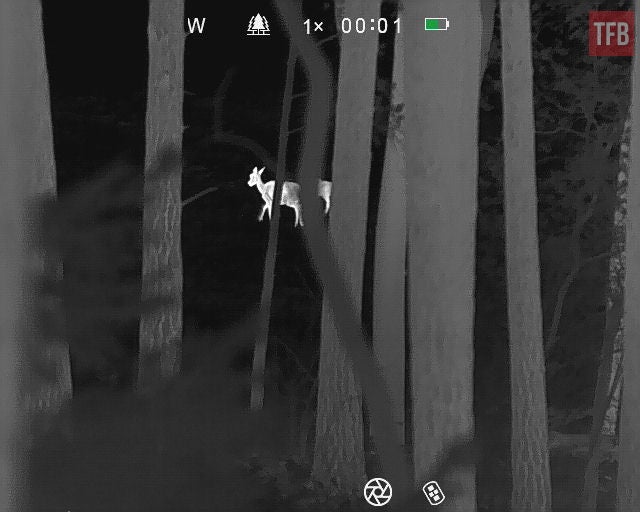
The distance to the house is about 160 meters. The unit is not mounted to a firearm. Summertime and sunshine, but look at all the details!
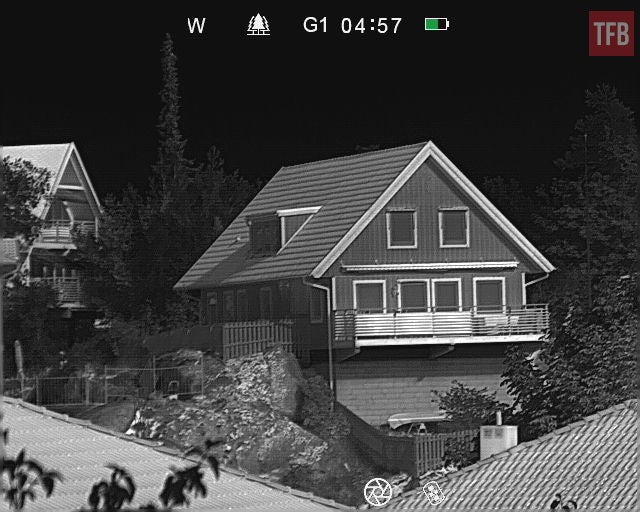
The Mate can produce some astonishing image quality. Lots of sensitivity and details in this image. Note the leaves, details in the wall section, tiles, chairs, etc. It’s almost as a black & white photo of reality. The distance is about 25 meters, full sunshine.
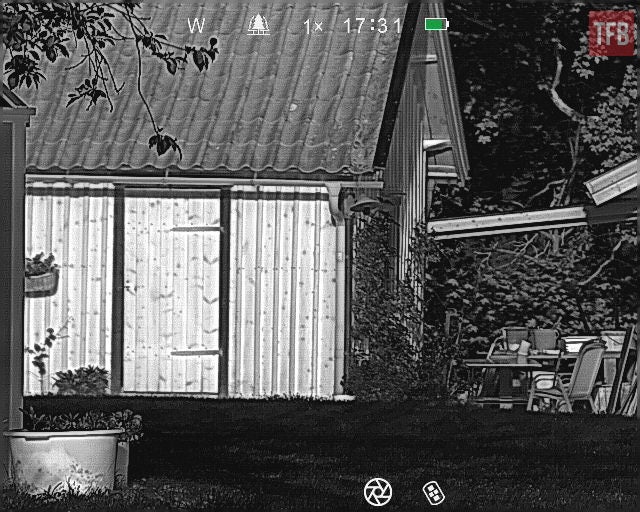
There’s a boat on the right side.
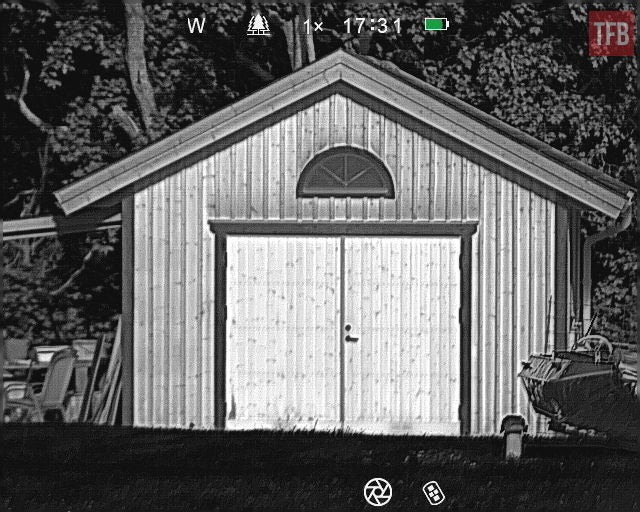
And during rain. This is the sad part, and I could have wished for a little more performance here, but when there’s water in the air (rain, fog, etc.) the image quality goes down with it.
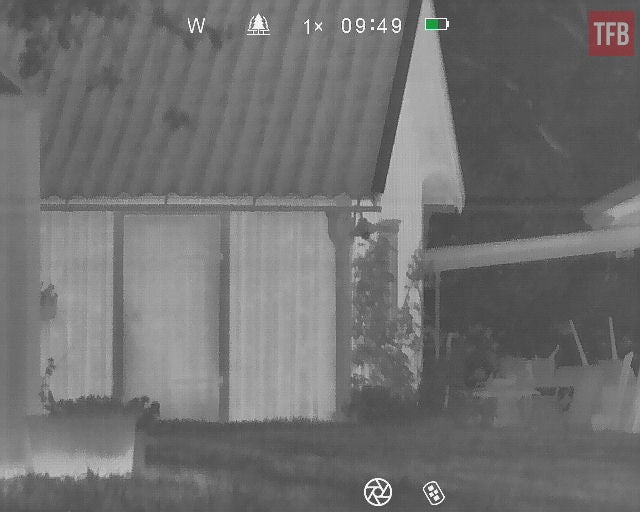
A visit to the wildlife park. Red deer, perhaps a few fallow deer as well.
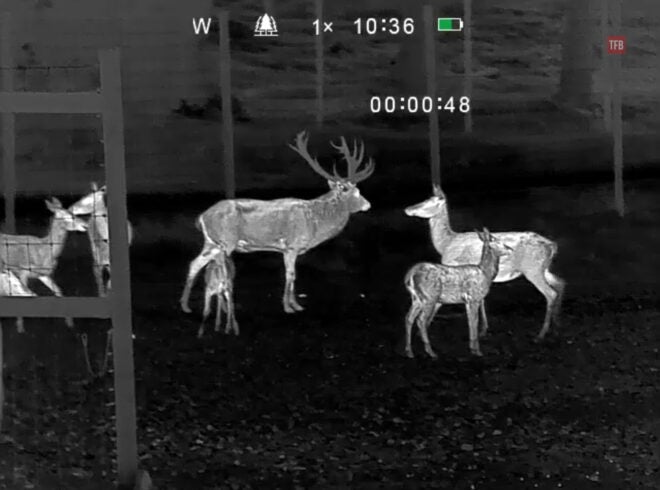
Working the menu and settings. You do see this is a moose, right? This is during an autumn night, in the wild, so it’s pitch black outside. The moose has some kind of injury on the left shoulder, visible in both images.
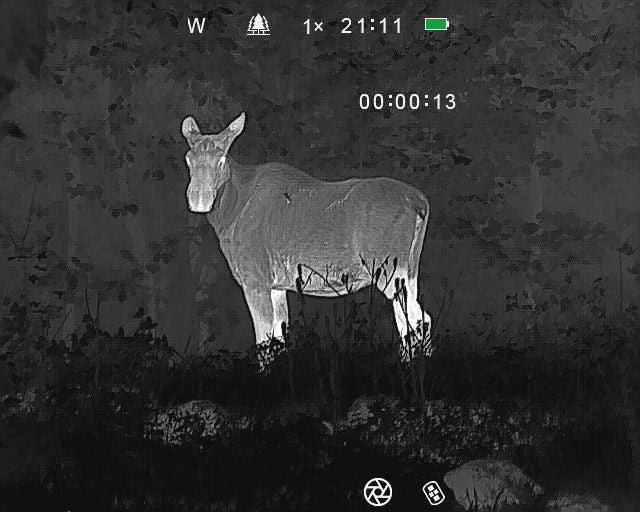
Below: The Infiray Outdoor Zoom V2 to compare image quality. These images were taken at the same time, doing the best to use the same settings. I personally prefer the image quality of the MATE, which seems to have a much lower NETD value (higher sensitivity), and a much higher image quality. On paper, they have very similar specifications, but the image quality is quite different. (Full review of the Zoom here).
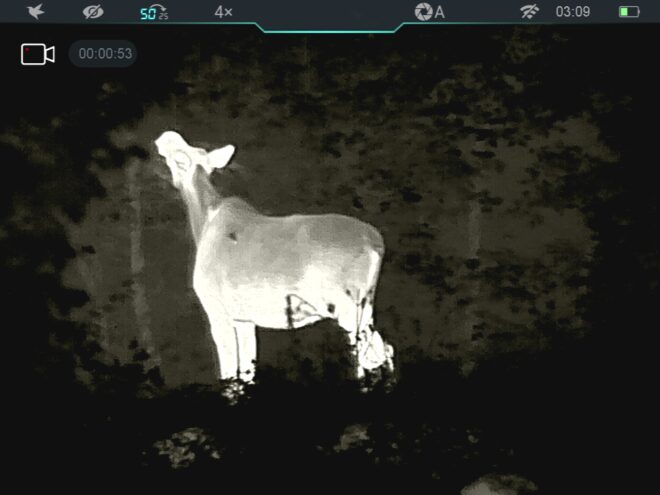
Roe deer on a field. There’s some slight latency sometimes, but nothing major to worry about unless perhaps at a driven hunt.
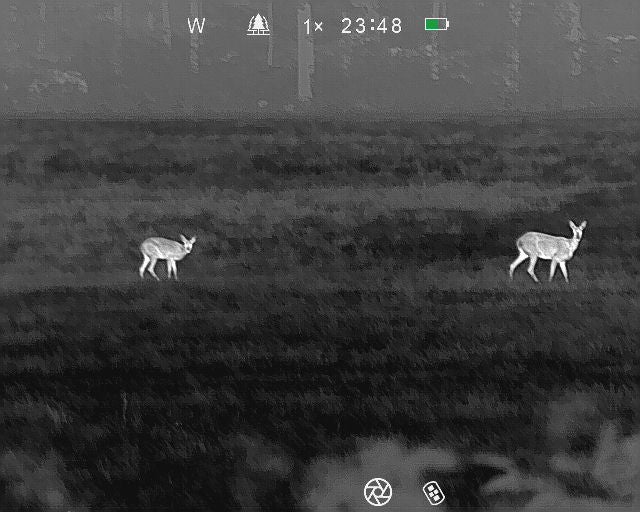
Moose calf at about 25 meters.
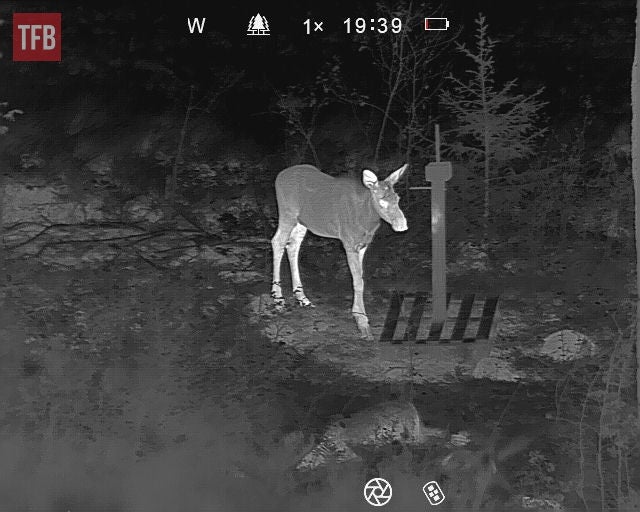
Deer on a field at around 200 meters. Note the shed, with some benches and a soccer goal (far right), in the background at about 300+ meters. This is pretty good image quality. You can see one of the antlers (there’s actually a deer with a missing antler in the area, so this is probably it).
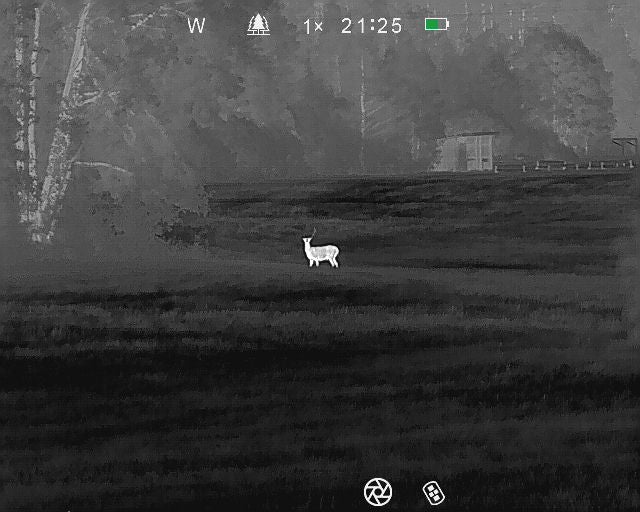
And the same with Red Hot mode.
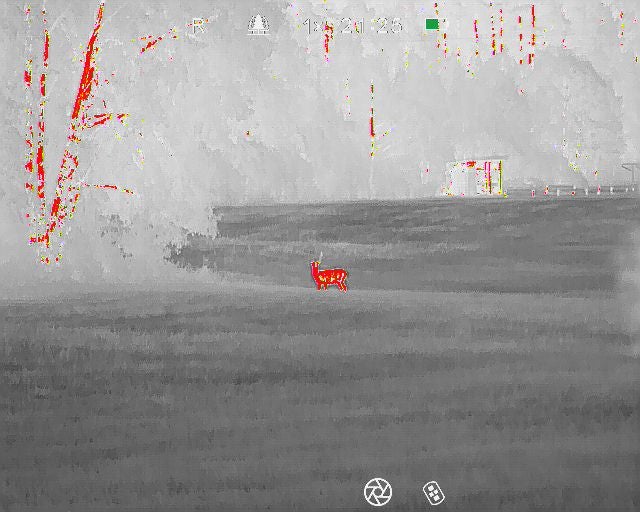
Another occasion. Family of fallow deer in the field. Most likely a hare mid-right. Moisture and grass from the ground will make the details more diffuse.
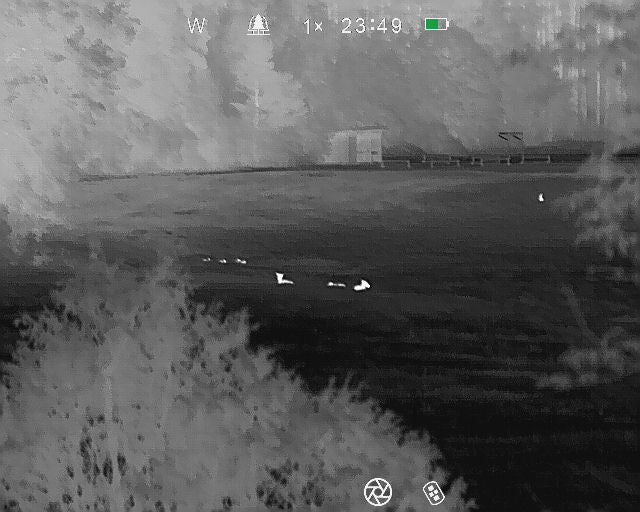
Moose cow at about 25 meters, partly behind some trees. It’s been raining for quite a while when this photo was taken, mid-night, and the temperature was around +5C.
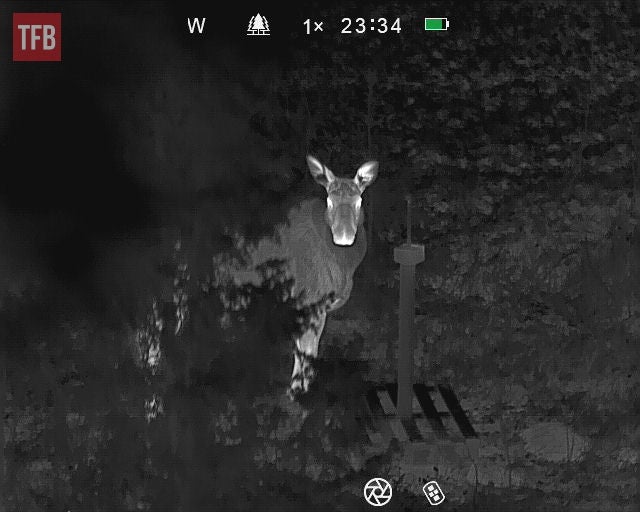
She did not like being watched.
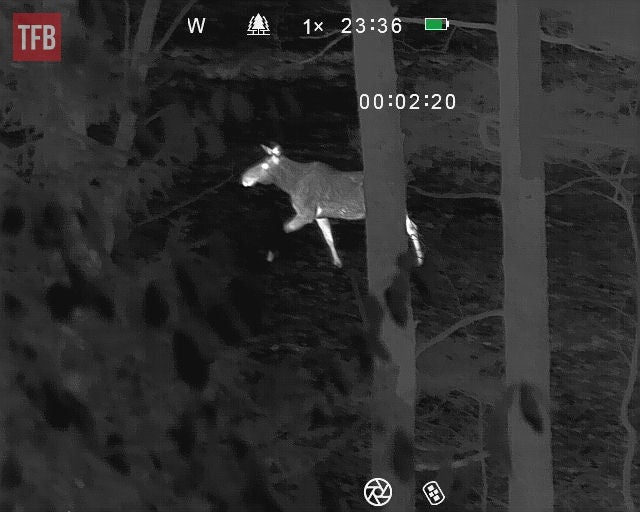
Thermals are great to spot and follow animals through foliage and brush unless it’s too dense.
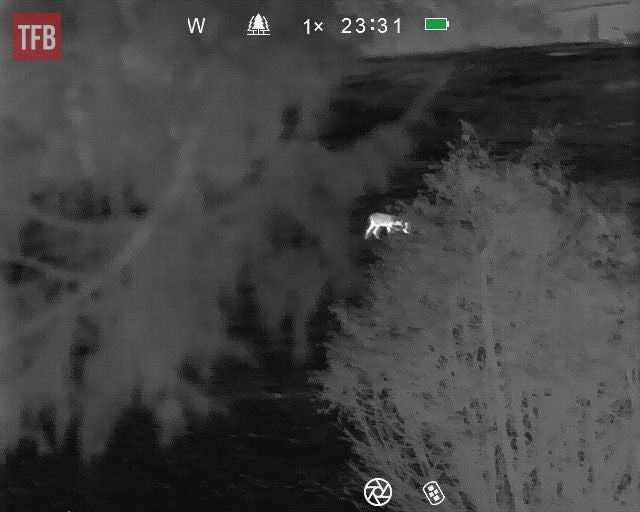
Deer at around 60-70 meters.
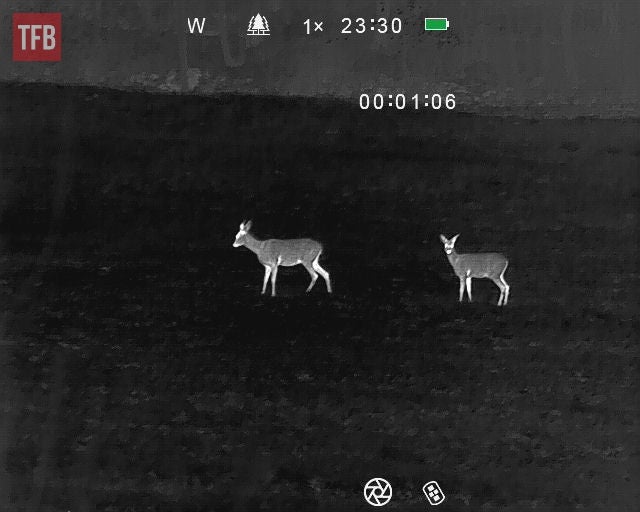
Deer at about 160 meters. The background is a forest and may look boring. However, if there’s any kind of heat in there it will show up.
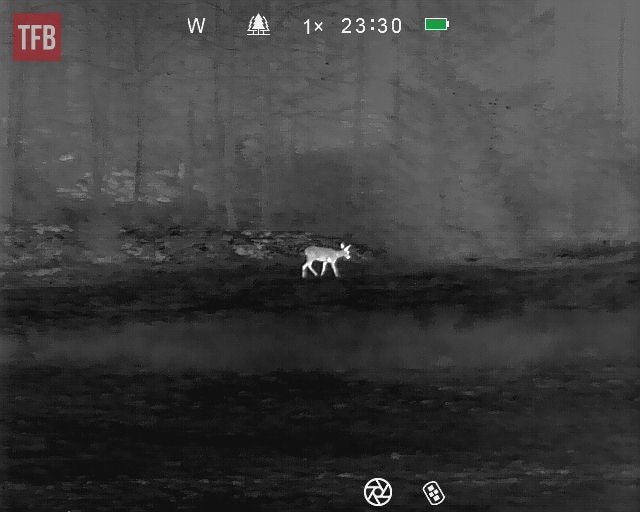
Some still images get this kind of latency effect. It’s not a problem for a spotter, but latency is not something you want on a thermal clip-on or thermal riflescope. The danger is that there’s a delay in what you see versus where your target is. To measure this is very difficult, so I don’t know for sure. You can’t really mount the MATE on a tripod and keep it 100% stable.
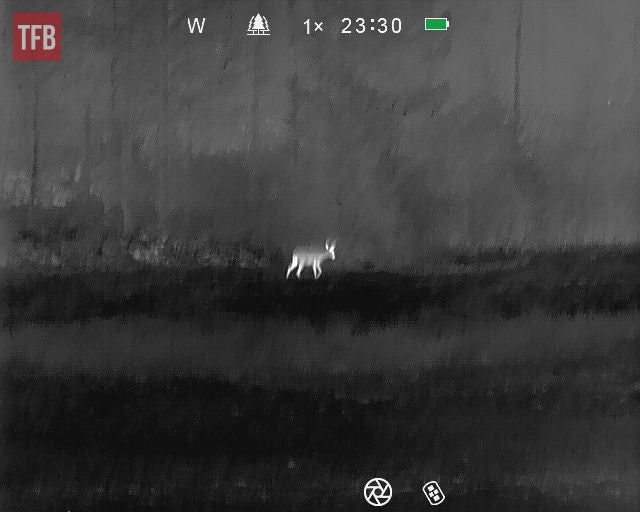
Here’s the FOV field-of-view at 100 yards. Pretty decent. You can compare the image quality to the Infiray Outdoor Tube/Bolt TL35 SE Thermal Riflescope here. You do get what you pay for when it comes to optics, and especially thermals.
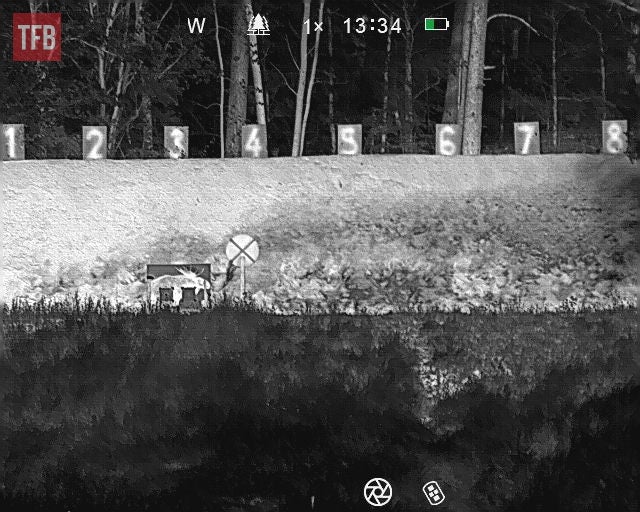
As usual, here’s a video from the device.
PRICE & AVAILABILITY
The MATE MAH50 is Made in China. Online in Europe, I see it listed at around €3,939.00 (incl. VAT) and iRay USA has an MSRP of $5,999.00 (link).
Coming to a conclusion
As mentioned in the beginning, the Infiray Outdoor MATE MAH50 delivers excellent image quality, unless the weather includes a lot of moisture. The removable keypad and remote are a good idea, but I’ve been very careful not to lose it as you can’t really run the device if that happens.
There’s WiFi, Type-C connection, Bluetooth and internal memory for photos, videos and audio, so you’re all set for all the needs I could think of.
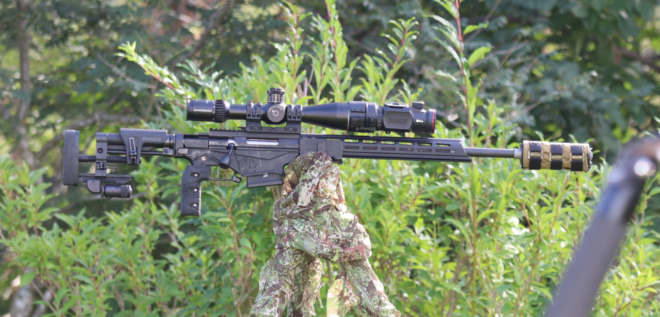
I rarely go for long excursions, so the only time I run into a low battery is if I forget to charge. But the MATE 50 does like to drink those electrons, and the built-in battery life is claimed to be 4 hours. There’s an Infiray Battery Pack (comes in the box) which is said to give you another 7 hours, which should suffice for most users.
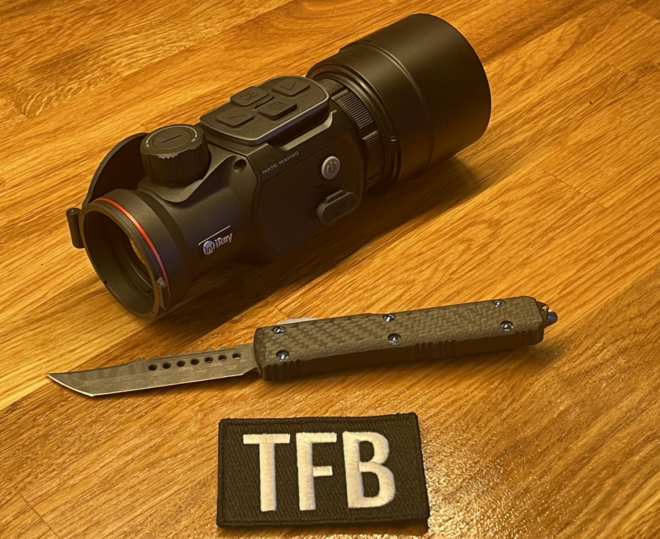
I can’t really find anything to complain about the overall build quality or finish. If you’re looking for a high-end thermal front attachment you should definitely check it out. Here’s a link if you’re interested to learn more: InfiRay Outdoor Mate MAH50 Thermal Front-Attachment
We are committed to finding, researching, and recommending the best products. We earn commissions from purchases you make using the retail links in our product reviews. Learn more about how this works.
 Your Privacy Choices
Your Privacy Choices
